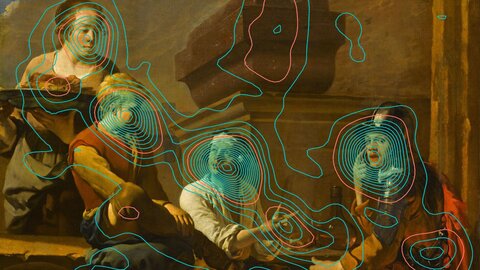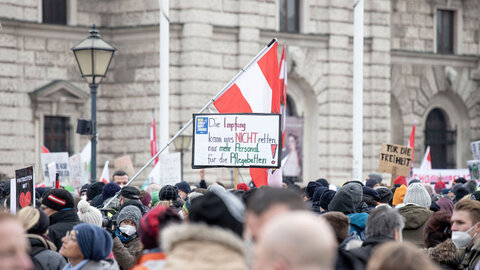Art museums and foundations of Russian oligarchs

Over the past three decades, Russia has undergone an extremely varied trajectory, which includes the spirit of optimism that followed the dissolution of the Soviet Union, the development of an economy strongly characterized by privatized, formerly state-owned large corporations, and the growing repression under President Vladimir Putin, whose invasion of Ukraine has prompted the international ostracism of his country. This was also the backdrop for the development of philanthropy in the Russian Federation: since the turn of the millennium, the country has seen the emergence of a diverse cultural landscape that foundations and donors helped to build. Having initially invested in the building of private and corporate art collections, the country's business elite later provided increasing support for the refurbishing and expanding of state-owned art institutions and ultimately began to construct their own museum buildings. Since perestroika, Russian philanthropists have achieved a great deal, even if the scale of their investment still seems modest alongside global comparisons.
From corporate collecting to foundations
The historian Waltraud Maria Bayer specializes in (post-)Soviet and Russian museums and art institutions. In her FWF-supported project “Private art museums and foundations of Russian oligarchs” Bayer has now produced the first comprehensive record of the history of Russian philanthropy since the 1990s. She analyzed a large number of legal provisions, ordinances, decrees and cultural policy programs, based on analog and digital (archived) Russian sources. In a number of case studies, she also took a detailed look at the work of selected foundations on the basis of material they published. The results of Bayer's basic research project are available in the open-access publication “FILANTROPIJA.RU. Kunst- und Museumsstiftungen der Moskauer Wirtschaftselite”.
Bayer’s publication begins with a review of the period of change during perestroika: in the late 1980s, the first cultural foundations received support “from the top”, for example from Raisa Gorbacheva, wife of Mikhail Gorbachev, the last President of the Soviet Union. Corporate collecting played an important role and banks and corporations invested in art collections. While a second phase saw a wildly prolific emergence of foundations and sponsored cultural initiatives under Russian President Boris Yeltsin, many of them did not survive due in part to rising inflation and a drastic devaluation of the ruble, with the economic crisis of 1998 bringing another hiatus. Several wealthy individuals were, however, prompted by this very crisis to establish cultural foundations.
2006, the year of Russian philanthropy
In 2006, the Russian government declared the “Year of Philanthropy”. A number of measures were taken to increase regulation of the Russian non-profit sector. The state created a legal framework and imposed restrictions on foundations, associations and NGOs. The changes did however have a positive impact on the sphere of culture and museums. Western concepts were adapted and used for professional cultural projects.
“Activities covered an increasingly wide range from the imperial legacy of the Tsarist era and iconic art to modernism and avant-garde, Socialist Realism and contemporary art, also including international art,” notes Bayer. It was striking to note that museum and cultural projects often coincided with major real estate and gentrification initiatives in major Russian cities. Some foundations had the declared aim of strengthening Russia's image abroad. While philanthropy continued to evolve in the 2010s, the multifaceted exchange with the West that had been developed over the years was severely curtailed when Russia annexed Crimea.
Dealing with art forgeries
Nine comprehensive case studies constitute the empirical main section of Bayer’s study. She devotes a central analysis to the complex problem of forgeries of Russian art, which also affects international collections and museums. As of 2006, the cultural bureaucracy undertook professionalization measures and in this context took stronger action against forgeries in the Russian art market. The issue often made global headlines, when art loans and purchases from Russia turned out to be dubious. A particularly sensational case in point that began in 2017 was the Ghent museum affair involving avant-garde Russian artwork from the Dieleghem Foundation. A lack of documentation and provenance resulted in an exhibition being shut down, plans for a private museum in Belgium being halted, and the Russian-Belgian owners of the artworks being remanded in custody.
Foundation portraits
An informative case study based on rich material sources is dedicated to the Potanin Foundation, named after the eponymous billionaire and ex-politician. This is probably the most influential foundation in the Russian museum world. Founded in 1999, the foundation had funded no fewer than 35,000 projects by 2019. Its scope of action includes being the main sponsor of the Hermitage Museum in St. Petersburg. “Not only did the Potanin Foundation invest in the organizational and structural modernization of museums in Russia, it also contributed a great deal to the professionalization of Russian museum studies,” says Bayer. It was also characterized by a high degree of international activity. Potanin was very well connected in Europe and the US; among the ventures he funded were major projects at the Kennedy Center in Washington, the Guggenheim Museum in New York, and most recently, at the Centre Pompidou.
Collective engagement of Jewish investors
A project that came about through collective investment was the Jewish Museum and Tolerance Center in Moscow. In this flagship project, a whole range of Jewish investors came together to showcase Jewish history and art and promote dialogue and education initiatives. The best-known of its sponsors, Roman Abramovich, supports Jewish organizations worldwide. His group is involved in major real estate projects and the cultural projects supported by his foundations – such as the Garage Museum – were developed in parallel with corporate activities.
Having already been severely curtailed following the annexation of Crimea in 2014, most of Russian cultural cooperation with the West ended abruptly with Russia's war of aggression on Ukraine and the resulting sanctions. Foreign institutions (for the time being) stopped their work in Russia, and many local sponsors, academics and experts in the arts also left the country. Bayer: “The tangible effects of the war and the sanctions on the cultural and museum sector have not really been studied yet. In view of the international connections of Russian philanthropists, this would require a worldwide effort – in a transdisciplinary manner and in the context of museum studies.”
Personal details
Waltraud M. Bayer is a historian and qualified as a professor. Her research focuses on the topics of museums, collecting, the art market and philanthropy in Eastern Europe. She studied history as well as English and Russian in Vienna, Minneapolis-St. Paul, Washington D.C. and Moscow. Between 1991 and 2016, she conducted research at the Department of History at the University of Graz. Between 2018 and 2022, she was a Senior Research Fellow in Vienna and has been working on the project “Private Art Museums and Foundations of Russian Oligarchs,” which received EUR 270,000 in funding from the Austrian Science Fund FWF.
Publications
Waltraud M. Bayer: FILANTROPIJA.RU. Kunst- und Museumsstiftungen der Moskauer Wirtschaftselite, 2022
Waltraud M. Bayer: Best Practice: Fälschungsforschung im Kölner Museum Ludwig, arthistoricum.net 2021
Waltraud M. Bayer: A Past That Won’t Pass: Stalin’s Museum Sales in a Transformed Global Context, in: Journal for Art Market Studies (JAMS), Vol. 2 (2), 2018





